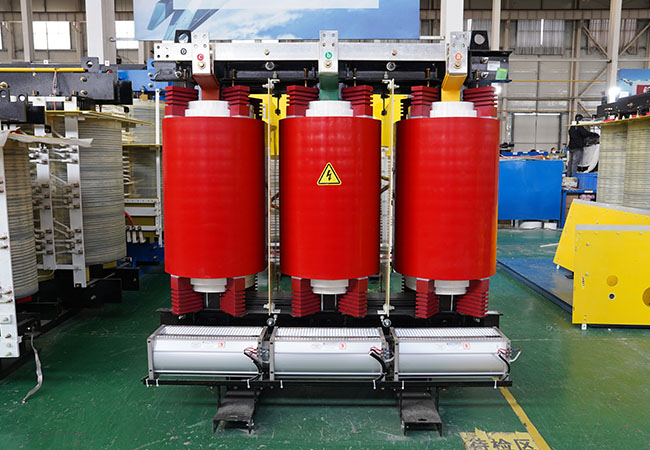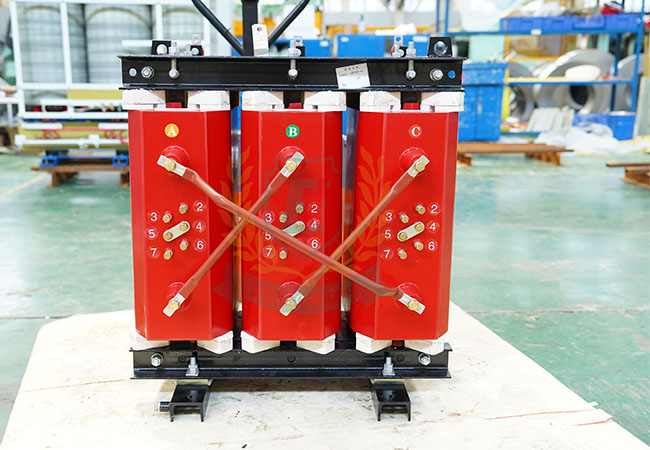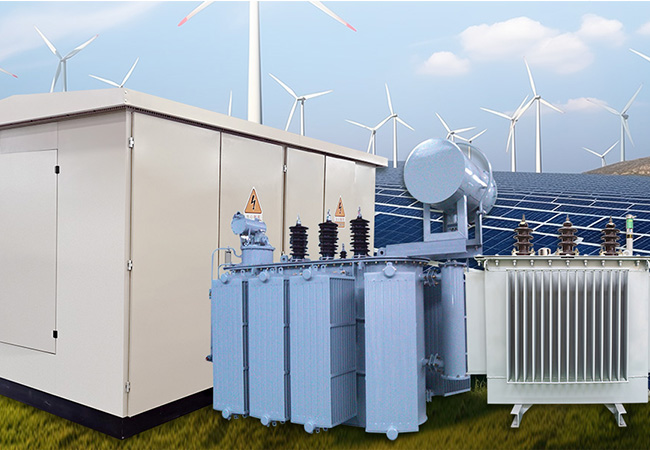Brief Analysis of Overvoltage Phenomenon of S11 Oil-immersed
03-08 2024 | By:
(1) Operating overvoltage
In the general distribution network, the vast majority are step-down transformers. The following will take the no-load switching operation of the step-down transformer as an example to illustrate the causes of operating overvoltage.
In qualitative analysis, the effect of inter-turn capacitance can be ignored. When the no-load transformer is pulled from the power grid, if the instantaneous value of the no-load current is not equal to zero but a certain value Ia, then the corresponding instantaneous value of the applied voltage is Ua. So at the moment of opening operation, the magnetic field energy stored in the inductor L1 is 1/2Ll-I2a, and the electric field energy stored on the capacitor C’Fe is 1/2C’FeU2a.
Since the circuit of the transformer is a circuit connected in parallel by the inductor L1 and the capacitor C’Fe at this time, the electromagnetic oscillation process will occur in the loop at the moment of the switching operation. During the oscillation process, when a certain instantaneous current is equal to zero, the magnetic field energy is all converted into electric field energy, which is absorbed by the capacitor, and the voltage on the capacitor rises to the maximum value Ucmax. When the opening operation current and the voltage on the capacitor are constant, the larger the inductance of the winding and the smaller the capacitance to ground, the higher the overvoltage of the opening operation. In the power system, the operating overvoltage usually does not exceed 30 to 4. 5 times the rated voltage.
(2) Atmospheric overvoltage
Atmospheric overvoltage is caused by the drastic change of the electromagnetic field when the transmission line is directly struck by lightning or thundercloud discharge. When the transmission line is directly struck by lightning, a large amount of electric charge (set as positive charge) carried by the thundercloud falls on the transmission line through the discharge channel, and a large amount of free electric charge spreads to both ends of the transmission line, causing a shock on the transmission line. voltage, known as lightning overvoltage. The part of the lightning wave rising from zero to the maximum value is called the wave head, and the falling part is called the wave tail.
If the time occupied by the wave head is regarded as 1/4 of the period of the periodic wave, the lightning wave can be regarded as a periodic wave with a very high frequency. In this way, when the overvoltage wave reaches the terminal of the transformer, it is equivalent to adding a high voltage with a very high frequency to the transformer. This transient process is very fast. At the beginning, since wL is large at high frequency, 1/wC is very small, and the current flows only from the turn capacitance of the high voltage winding and the capacitance to ground. Since the low-voltage winding is close to the iron core, its capacitance to ground is very large (that is, the capacitive reactance is very small), and the low-voltage winding can be approximately considered to be grounded.
When a lightning wave strikes, the voltage distribution along the height of the winding depends on the ratio of the inter-turn capacitance C’Fe to the ground capacitance C’Fe. In general, since both capacitors exist, part of the current is shunted by the ground capacitor during overvoltage, so the current flowing through each inter-turn capacitor is not equal. The later is smaller.
As the voltage distribution along the height of the winding becomes uneven, the initial voltage distribution is very uneven, and there is a large voltage gradient between the first few turns near the end of the transmission line. Therefore, in the first few turns near the end of the transmission line, Turn-to-turn insulation is under great threat, and the highest turn-to-turn voltage may be as high as 50 to 200 times the rated voltage.
You may also find these interesting:


